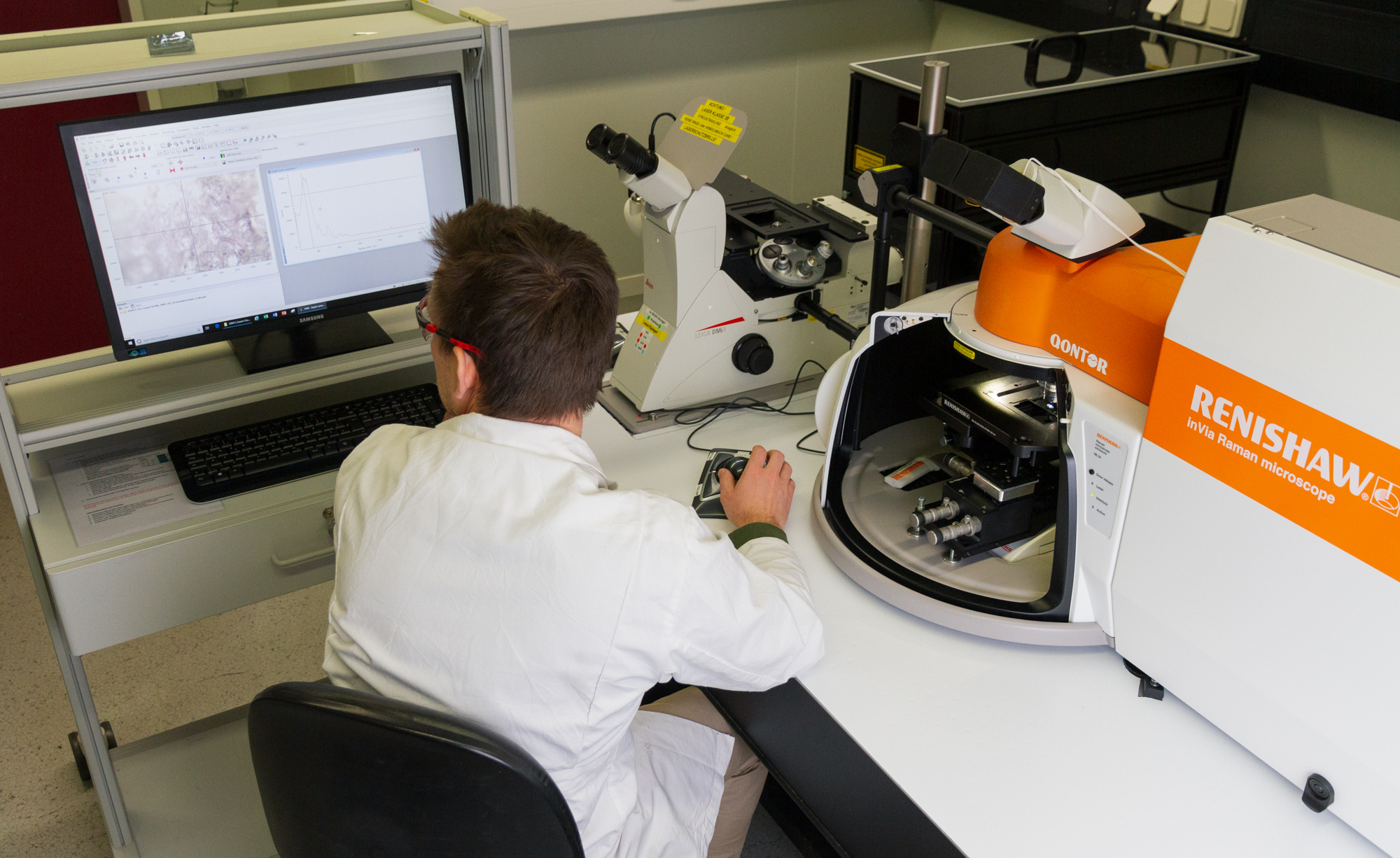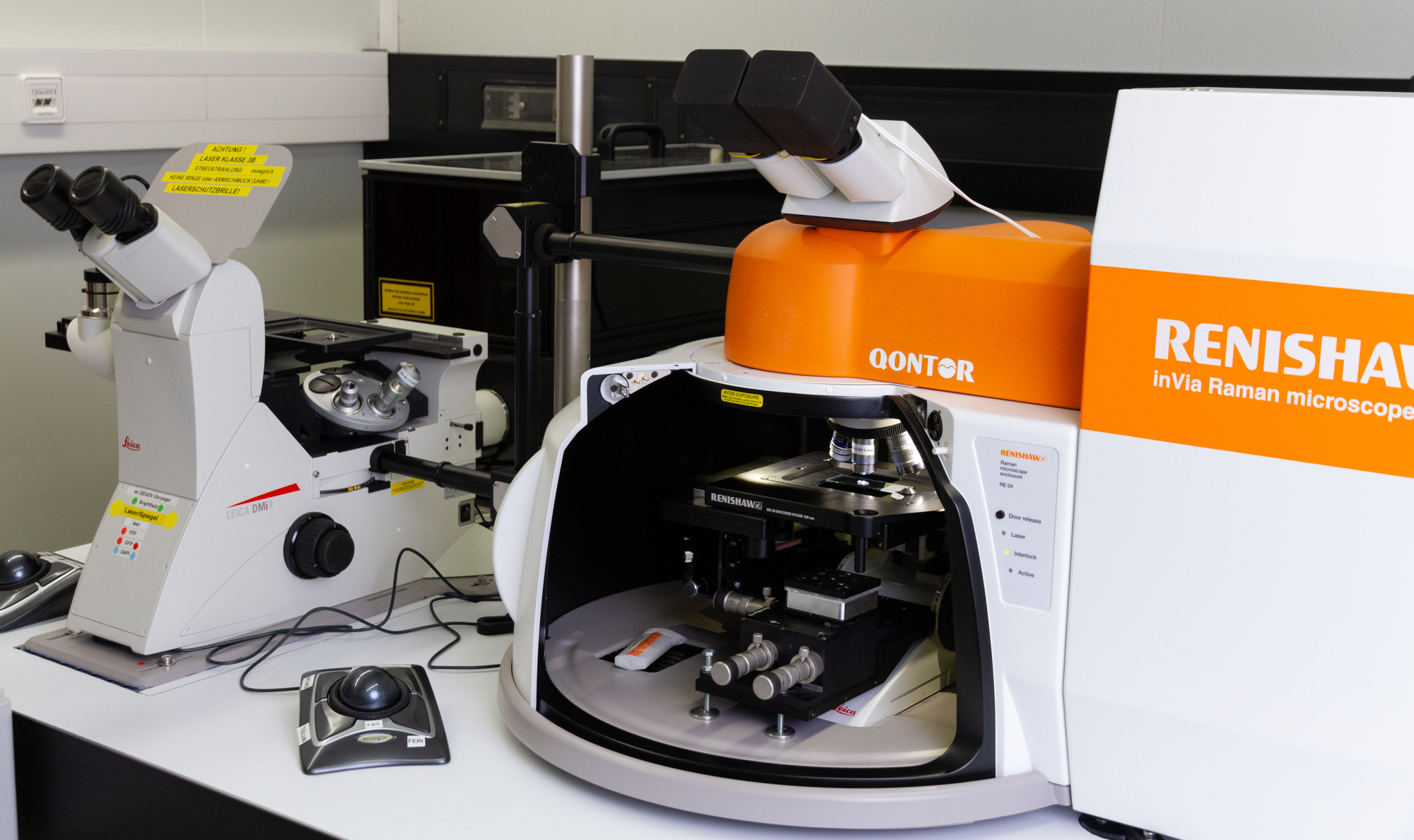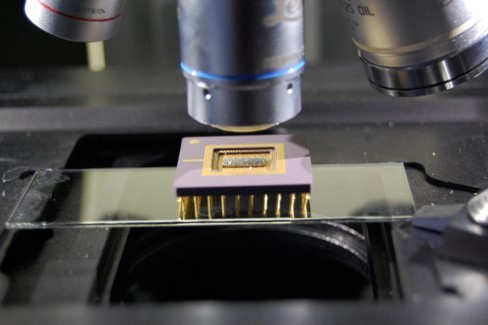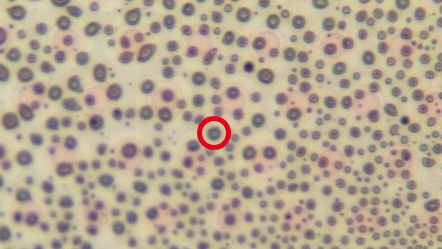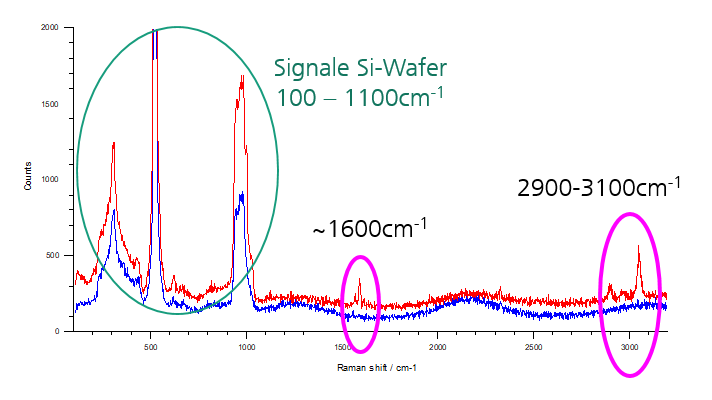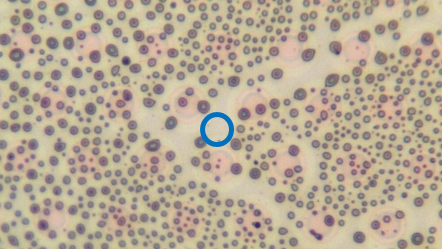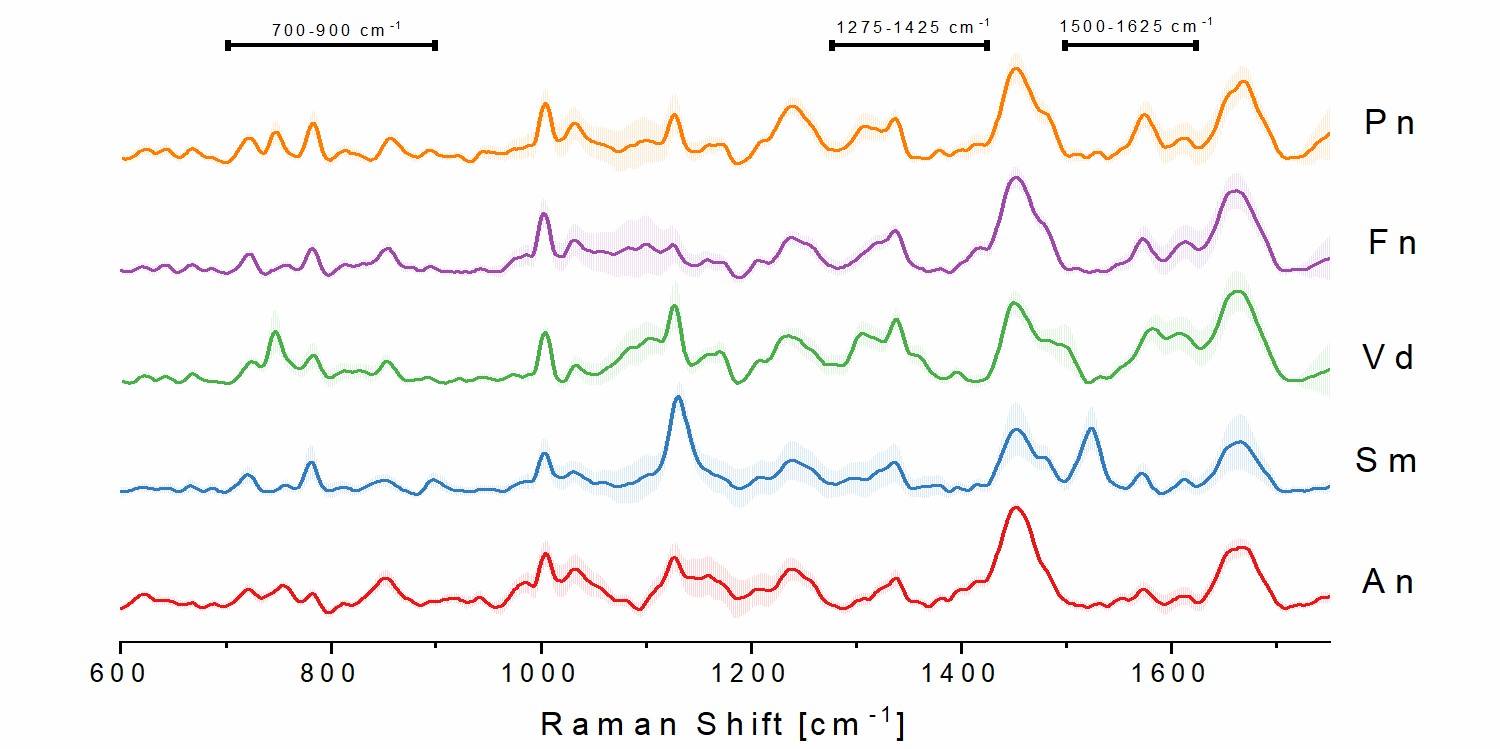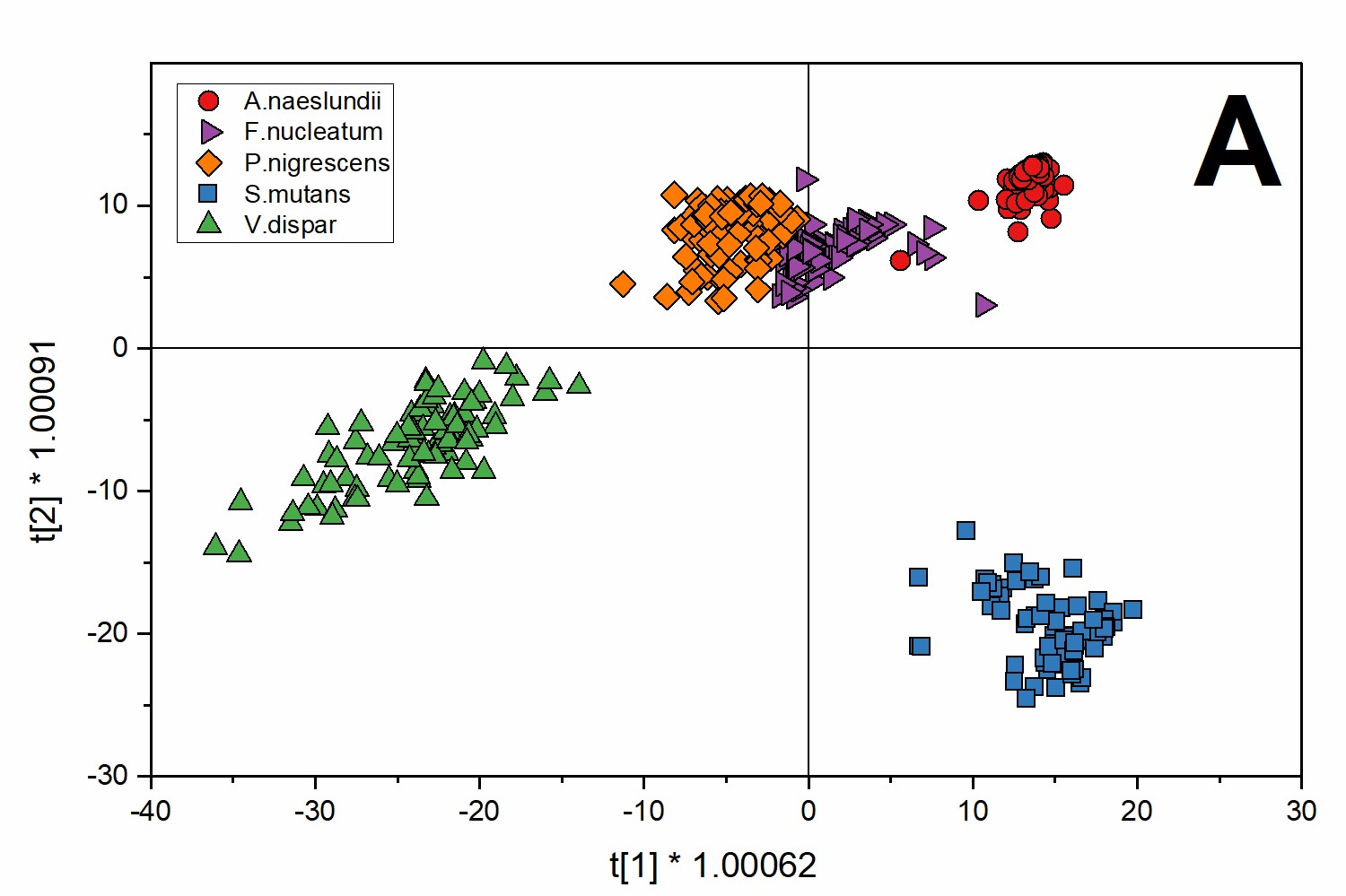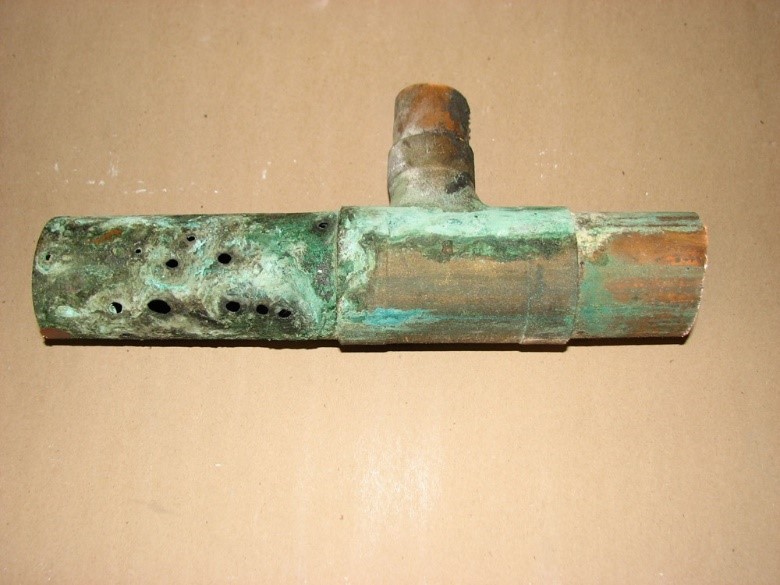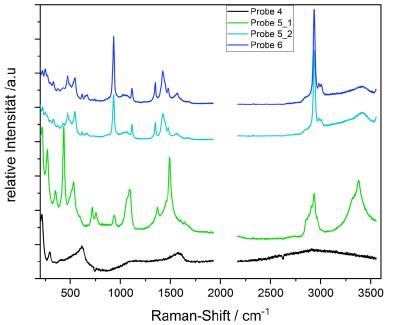Confocal Raman microspectroscopy enables spatially resolved identification of chemical, biological and mineral components in complex heterogeneous samples.
Measurement principle and areas of application
Similar to infrared spectroscopy, Raman spectroscopy uses the interaction of light with matter, i.e. the capture of molecular vibration bands on irradiation with monochromatic light coming from a laser, which allows insights into the molecular structure and properties of a material. A major advantage of Raman spectroscopy is the application in aqueous media due to no interfering water band in the spectrum.
In principle, Raman-based analysis and characterization can be applied to a wide variety of materials, from polymers as well as medical and pharmaceutical products to biological tissue samples.
Automated and highly flexible Raman analyses with Leica microscopes and CARS unit
With the confocal inVia™ Qontor Raman microscope from Renishaw, Fraunhofer IGB has the opportunity to use an automated and highly flexible microscope for research which can be used for investigations in all business areas of the IGB: health, environment and sustainable chemistry.
The system is equipped with two Leica microscopes that allow measurements in the upright position (with chamber) and inverse in transmission. For maximal flexibility, the system can use a 532 nm (max. 50 mW) and 785 nm (max. 300 mW) laser as well as a CARS unit (coherent anti-Stokes Raman spectroscopy). The CARS unit offers the opportunity to filter unwanted fluorescent signals resulting from the sample. Being one of the first, Fraunhofer IGB can perform measurements with a laser and CARS-unit almost simultaneously on the same sample.
Analysis of chemical compounds and materials
The most common application of Raman microscopy is the analysis of chemical compounds (e.g. materials, catalysts, liquids, etc.) In the past, the IGB looked at different hydrogels.
Identification of substances in samples of unknown composition
Additionally, band behavior from Raman microscopy allows the non-destructive identification of the chemical composition of an unknown sample. Here, Fraunhofer IGB was able to determine the formation mechanism of chemical corrosion in a copper sample and thus was able to exclude a biological reason for material destruction.
Qualitative and quantitative analysis of cells in biological samples
In the field of biological research, Raman spectroscopy is gaining increased significance as well. The main field of application of the technology is the analysis of cell systems because the analysis can be performed without sample preparation and is non-destructive. Current research at IGB includes differentiation of microorganisms in biofilms, differentiation of live and dead cells as well as quantification of microorganisms in fluidic systems.
 Fraunhofer Institute for Interfacial Engineering and Biotechnology IGB
Fraunhofer Institute for Interfacial Engineering and Biotechnology IGB